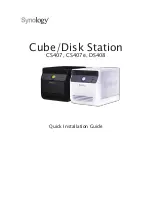
System Backup and Disaster Recovery
Setting Up the ftServer System
5-25
System Backup and Disaster Recovery
Your ftServer system provides many safeguards against losing data due to hardware
failures. However, it cannot cover all contingencies, so
it is still important to perform
regular backups and enact a good disaster-recovery program
.
Ethernet Devices
Network interface naming on ftServer systems running a supported Linux
distribution
together with
Express Builder
is different from that on other Linux systems. On ftServer
systems,
physical devices are given names corresponding to their hardware location.
After
installing
Express Builder
, the interfaces associated with the Ethernet adapters are
operational.
Multiple interfaces can be bonded together in a channel-bonding interface.
This section discusses the following topics:
•
‘‘
Physical Device Naming
”
•
‘‘
Monitoring and Configuring Channel-Bonding Interfaces
”
•
‘‘
MAC Addresses
”
Physical Device Naming
On many Linux systems, Ethernet devices are normally assigned names based on the
order of discovery at system startup. The names begin with the letters “eth,” followed
by a number starting with 0 and counting up. This is convenient because the first (and
often only) device on a host is predictably named eth0 and can be configured without
detailed knowledge of the device type.
On an ftServer system, configuration may change dynamically when hardware failures
occur, repairs are made, or when an administrator adds or removes components.
Creating new Ethernet device names when new hardware is installed, tracking the
name of an device while it is removed and replaced and matching it up again, or
deleting the name would be difficult and the results confusing.
Instead,
Express Builder
assigns to network devices names that are derived from their
physical
location in the system.
Table 5-2
shows the names of the embedded Ethernet
devices
in ftServer CPU-I/O enclosures.
















































